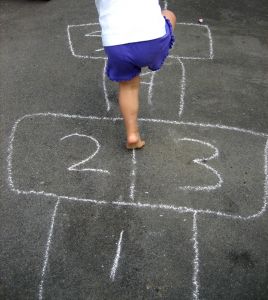A “Sensory Diet” (a term coined by Occupational Therapist Patricia Wilbarger) refers to a carefully designed and personalized activity plan that provides the sensory input a person needs to stay focused and organized throughout the day. The word “diet” is an interesting term used here because it is commonly associated with eating. However, it can also be defined as “a manner of living” and “habitual nourishment”. Hence, it is an appropriate reference to describe the needs of the senses.

Just as we need food on a daily basis, some people need daily sensory activities to survive and thrive in the world. For a child with sensory processing issues, a sensory diet meets all of these definitions: it is 24/7 nourishment, which is just as essential as eating breakfast, lunch and dinner.
⇒ Related Read: Breakfast Ideas For Kids
A sensory diet, created jointly with a qualified occupational therapist, can help meet sensory needs in safe, predictable, effective ways. he goal is to give your child the right type of sensory input in regular, controlled doses. This will reduce the need for your child to resort to undesirable behaviours to fulfill his or her sensory needs.
For instance, instead of squashing you or other children to get deep pressure input, your child can roll up in a “burrito” blanket or “sandwich” himself between pillows. Instead of chewing on a pencil or toys, your child can chomp on a safe, age-appropriate chewy tube. Instead of jumping on the couch, your child can jump for a specified number of minutes on a mini-trampoline before it is time to sit down on the chair.
Creating a Sensory Diet
Each child is unique so there is no cookbook recipe for creating a sensory diet. The starting point is to look at your child’s behaviours, especially those you find a little uncommon. Generally speaking, a child whose nervous system is on “hyperactive” or “too wired” needs more calming input. On the other hand, a child who is more “lethargic” or “too tired” needs more arousing input.

Interestingly, many of the activities can meet both sets of needs. “Heavy work” or “proprioceptive input” that uses the larger muscles and joints of the body, such as climbing, jumping, pounding, pushing and pulling, makes us feel grounded within our bodies. This is especially beneficial for a child who needs help to self-regulate.
While each person’s likes and dislikes are different; generally, activities that are slow, rhythmic and repetitive tend to be more soothing. Those activities that are more rapid and erratic tend to be more alerting. A child may need both types of input as part of his or his sensory diet. Finding the perfect activities to achieve that optimal state (not too tired and not too wired) takes some careful observation, creativity, and empathy. With the help of a knowledgeable occupational therapist, an appropriate 24/7 sensory diet can be created and fitted for your child.
Example of a Sensory Diet
It is strongly recommended that you work with an occupational therapist who specializes in sensory processing issues.
In the morning
- Tickle feet and back or listen to fast music e.g. nursery rhymes to wake up the senses (lethargic kids)
- Massage arms and legs or listen to calming music (hyperactive kids)
- Eat crunchy cereal or chewy granola bar or licorice or creamy yogurt
- Use vibrating toothbrush and/or vibrating hairbrush
- Jump on mini-trampoline as directed

In School
- Do jumping jacks or jump on mini-trampoline
- Add variety by playing catch or toss balls or bean bags into a basket while jumping
- Provide deep pressure massage with/without lotion on arms and legs to regulate body system
- Use therapy putty by squashing, rolling, pounding, poking or pinching, etc.
- Put inflatable cushion while remaining seated on the chair or the floor
- Put weighted lap pad or wear weighted vest
- Listen to favourite music
- Provide oral motor exercises
- Suck thick liquids through straw
- Eat chewy and crunchy, or creamy, smooth and thick snacks
- Do wheelbarrow walk
- Bounce on a therapy ball
- Play catch or hopscotch
- Play at the playground for at least 30 minutes
At dinner time
- Help with cooking, mixing, chopping, etc.
- Help set table, using two hands to carry and balance a tray
- Put weighted lap pad or wear weighted vest when fidgety while eating
- Provide crunchy and chewy, creamy, smooth and thick or lumpy foods
⇒ Related Read: Cooking With Your Kids The Fun Way

At night
- Encourage family time activities
- Create clay projects, painting projects, etc.
- Take a warm bath with bubbles and calming essential oil (typically vanilla, rose, and sweet orange)
- Use vibrating toothbrush and/or vibrating hairbrush
- Massage arms, legs and back during reading time
This article is brought to you by the team of speech-language therapists and occupational therapists from The Children’s Therapy Centre. They work with children of all ages with communication, motor or attention difficulties.
* * * * *
If you find this article useful, do click Like and Share at the bottom of the post, thank you.
Like what you see here? Get parenting tips and stories straight to your inbox! Join our mailing list here.






















































